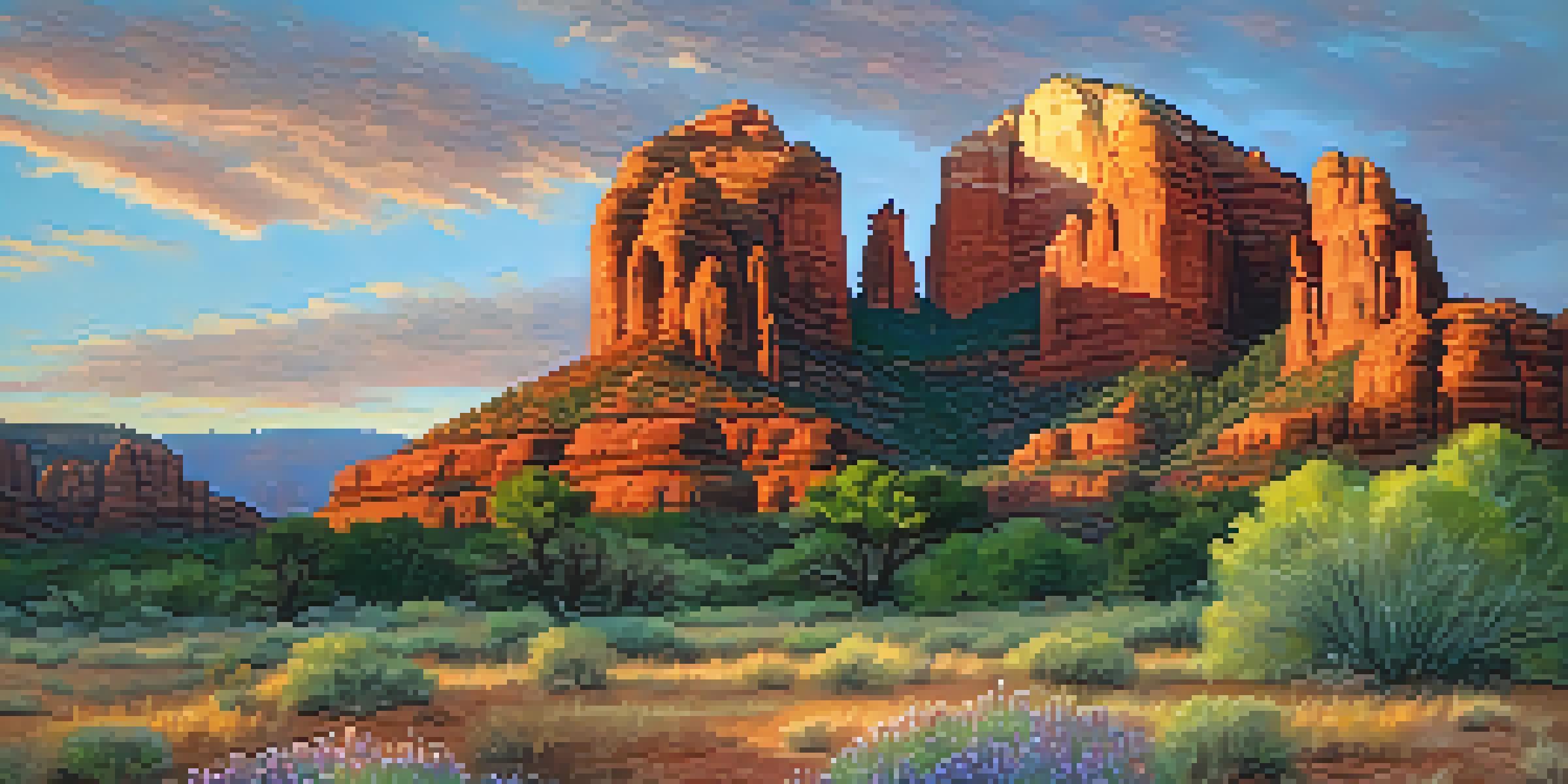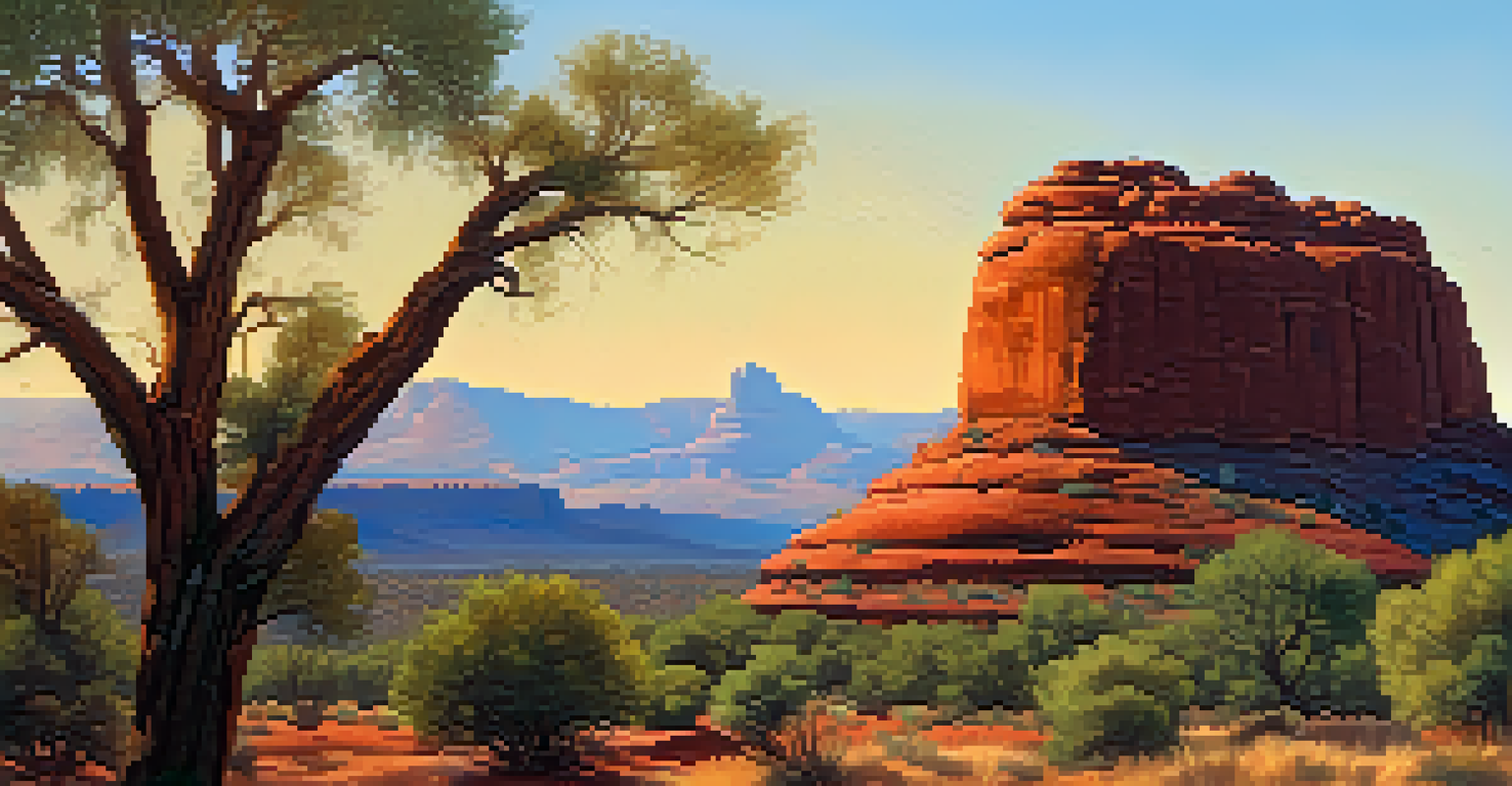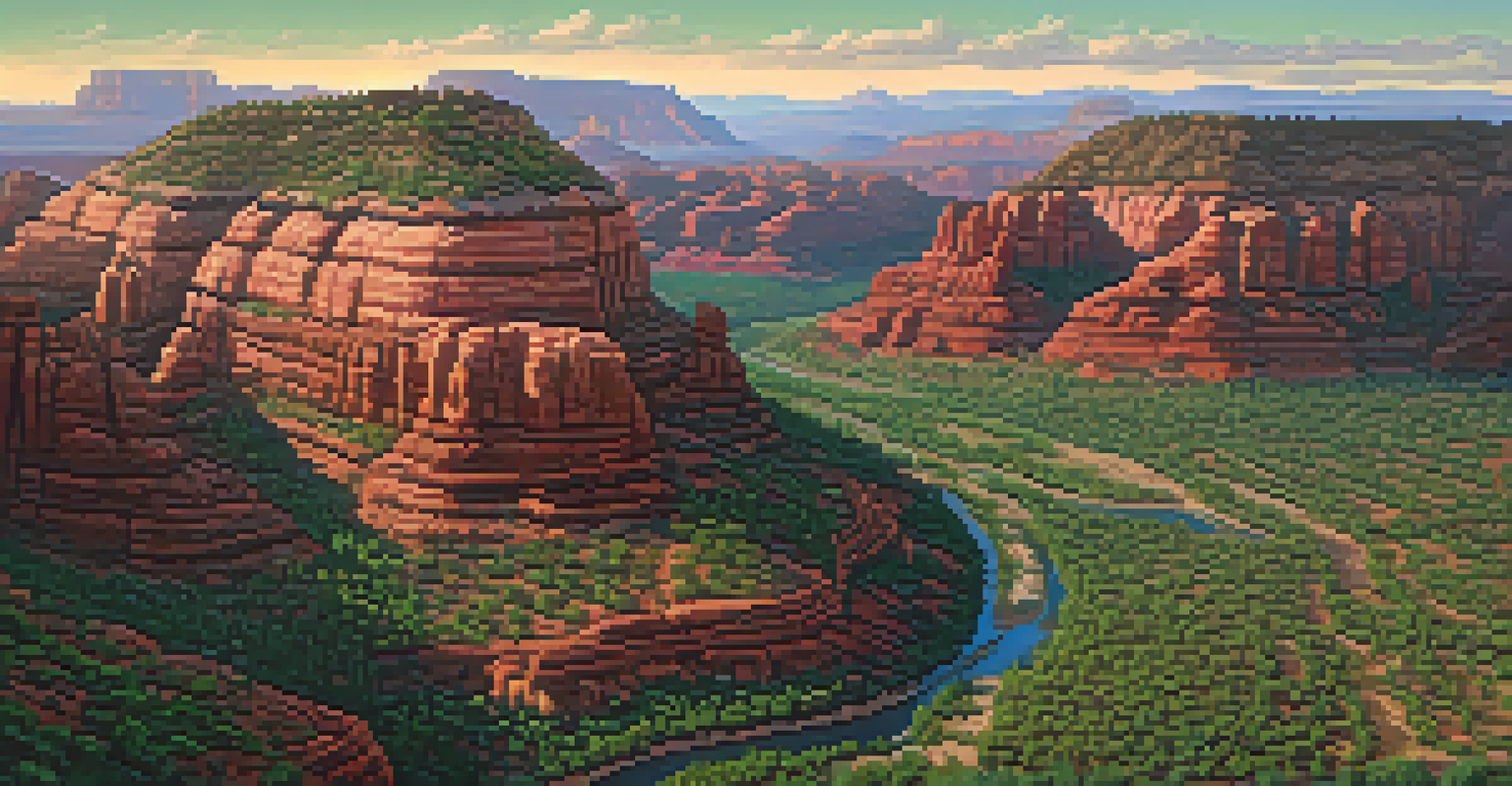Photography Tips for Capturing Sedona's Scenic Outdoor Views

Understanding Sedona's Unique Landscape and Light
Sedona is known for its stunning red rock formations and vibrant colors, making it a photographer's paradise. The unique geology of the area creates dramatic shadows and highlights that can enhance your images. Understanding how the natural light interacts with the landscape is crucial; the golden hours—early morning and late afternoon—provide the best conditions for photography.
Photography is the story I fail to put into words.
The way sunlight casts over the red rocks can completely transform the scene. For instance, capturing the early morning light can reveal soft pastels, while the sunset often ignites the rocks with fiery hues. Timing your shoots to coincide with these golden hours can elevate your photos from ordinary to extraordinary.
Additionally, consider the weather conditions, as they can drastically change the mood of your photos. A cloudy day can produce a soft, diffused light that works wonderfully for capturing the subtle details of the landscape. Being mindful of these factors will help you take full advantage of Sedona's unique beauty.
Choosing the Right Equipment for Outdoor Photography
Selecting the right gear is essential for capturing Sedona's scenic views effectively. A DSLR or mirrorless camera with interchangeable lenses provides you with the versatility to shoot wide landscapes or zoom in on intricate details. If you’re new to photography, even a good smartphone can yield impressive results with its advanced camera features.

Wide-angle lenses are especially beneficial for landscape photography, as they allow you to capture more of the scene in a single frame. For instance, a 16-35mm lens can beautifully showcase the expansive vistas of Red Rock State Park. Additionally, consider bringing a tripod; it stabilizes your camera for long exposure shots, particularly during twilight or nighttime photography.
Maximize Sedona's Golden Hours
Capturing photos during the early morning and late afternoon enhances the vibrant colors and dramatic shadows of Sedona's landscape.
Don't forget to pack extra batteries and memory cards, as you wouldn't want to miss out on any breathtaking shots. Sedona's landscapes are incredibly diverse, so having the right tools at your disposal will ensure you're ready for any photographic opportunity that arises.
Mastering Composition Techniques for Stunning Shots
Composition can make or break a photograph, especially in a visually rich location like Sedona. One popular technique is the 'Rule of Thirds'; by dividing your frame into a grid, you can position key elements along the lines or at their intersections. This creates a balanced and engaging image that draws the viewer's eye.
The best camera is the one you have with you.
Another effective method is leading lines, which guide the viewer’s gaze into the scene. In Sedona, natural features like paths, rivers, or even the contours of the rocks can serve as leading lines. By placing these elements in the foreground, you can create depth and a sense of movement within your photographs.
Don't hesitate to experiment with different angles and perspectives, as this can significantly change the mood of your photos. Shooting from a low angle can make the red rocks appear even more imposing, while a bird’s-eye view can provide a unique perspective of the landscape. Each composition choice can transform your photography narrative.
Incorporating Foreground Elements for Depth
To add depth to your images, consider including foreground elements that frame your main subject. This technique can create a sense of scale and draw the viewer into the scene. In Sedona, you might use wildflowers, cacti, or even a weathered tree branch as a natural frame for the stunning red rocks in the background.
For example, capturing a shot of Cathedral Rock with some vibrant wildflowers in the foreground can create a beautiful contrast of colors. This not only enhances the visual interest but also tells a story about the environment. Think of your photograph as a layered composition that invites the viewer to explore every part of the scene.
Utilize Composition Techniques
Employing techniques like the 'Rule of Thirds' and leading lines can significantly improve the visual interest and depth of your photographs.
In addition, using a shallow depth of field can help blur the foreground slightly, bringing attention to your main subject while still providing context. This technique allows you to focus on the breathtaking landscape while keeping the viewer engaged with the overall composition.
Utilizing Natural Frames and Leading Lines
Natural frames can enhance your photos by adding layers and directing the viewer's eye toward the main subject. Look for overhanging branches, rock formations, or even pathways that can act as frames within your composition. By incorporating these elements, you can create a more dynamic and engaging photograph.
Similarly, leading lines are a powerful tool in landscape photography. These lines can guide the viewer’s gaze toward the focal point of your image. In Sedona, winding trails or riverbanks can serve as excellent leading lines, drawing attention to the majestic red rock formations.
By combining these techniques, you can elevate your photography to a new level. For instance, framing the iconic Bell Rock with a pathway leading toward it not only highlights the subject but also invites the viewer to imagine walking into the scene. This adds a layer of storytelling to your images.
Experimenting with Different Perspectives
Don’t be afraid to change your perspective to capture Sedona’s landscapes in a fresh way. Instead of shooting from eye level, try crouching down or finding a higher vantage point to change the composition. This can reveal interesting details and create a more dynamic image that stands out.
For instance, photographing the red rocks from a low angle can make them appear larger-than-life, emphasizing their grandeur. Conversely, a high viewpoint may showcase the vastness of the desert and its intricate patterns. Experimenting with angles can lead to unexpected and compelling results.
Post-Processing Enhancements
Careful post-processing with tools like Adobe Lightroom can enhance your photos while maintaining the natural beauty of Sedona's landscapes.
Additionally, consider the time of day and how light affects different perspectives. Early morning light can create long shadows, while the golden hour can produce a warm glow. Observing how the scene transforms throughout the day can inspire creative compositions that capture the essence of Sedona.
Post-Processing Tips for Enhancing Your Photos
Once you've captured your stunning photos, the post-processing stage is where the magic can happen. Using software like Adobe Lightroom or Photoshop allows you to adjust brightness, contrast, and saturation, enhancing the colors of Sedona's landscapes. This can help your images reflect the vibrant beauty that you experienced in person.
However, it’s essential to strike a balance—over-editing can detract from the natural beauty of the scene. Aim to enhance the photo while keeping it realistic. For instance, you might want to slightly boost the reds in the rocks but avoid making them appear unnatural.

Finally, consider cropping your images to improve composition. A well-cropped photo can remove distractions and focus attention on the subject. Remember, post-processing is a tool to elevate your photography, allowing you to share the breathtaking views of Sedona with others in the best light possible.